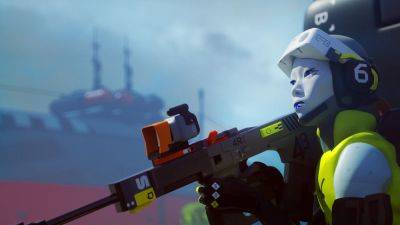Ara: History Untold looks a lot like Civilization until you realize there's no hexes: 'We're not playing a board game, we're actually trying to simulate some of what we see in real life'
As much as it resembles Civilization, soon-to-release grand strategy game Ara: History Untold is different in some big ways. The biggest might be its simultaneous turn resolution, which is detailed in one of developer Oxide's dev diaries. That one I clocked a while back, but I somehow missed another major difference even though it shows up in almost every screenshot: Ara's map isn't divided into a regular grid or hexagon pattern.
Instead, Ara's worlds are divided into irregularly-shaped regions. This was pointed out to me in a recent interview with Gabriela Leskur, Ara's narrative and experience lead, and Matt Turnbull, executive producer in publishing at Xbox Game Studios.
«I'm a big fan of Risk, but we're not playing a board game, we're actually trying to simulate some of what we see in real life,» said Leskur. «One thing that's unique is that we have these dynamically generated regions. So, they're not hexes, they are irregularly-shaped based on things that you see in nature. They're along rivers, along coastlines. They're these unusual shapes that reflect how we see cartographers have done things in our history, and also the actual natural world itself.»
These regions are the units of land that cities claim as they grow, and military forces occupy them one after another as they move across the map. So in those contexts, regions work similarly to a regular grid, except that the size and shape and number of sides varies. Things get more complicated when you get down to sub-regions called zones.
Leskur says she thinks of regions as pizzas. If you're moving troops, they move around at the full pizza scale—from one region to the next—but land improvements are built on the slice scale, and like pizzas, regions aren't all divided into the same number of slices (aka zones).
«I'm thinking strategically as I'm expanding my city,» said Leskur. «I do so by claiming nearby regions. And I look at, 'OK, how many zones are in this region?' If I want to build a very impressive







